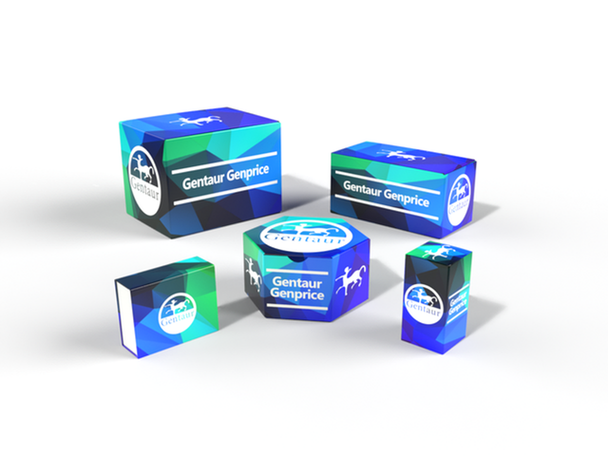Description
IL-15 Antibody | 7231 | Gentaur UK, US & Europe Distribution
Host: Rabbit
Reactivity: Human, Mouse, Rat
Homology: Predicted species reactivity based on immunogen sequence: Guinea pig: (100%) , Sheep: (92%) , Rabbit: (92%) , Pig: (92%) , Bovine: (92%)
Immunogen: Rabbit polyclonal IL-15 antibody was raised against a 13 amino acid peptide near the center of human IL-15.
The immunogen is located within amino acids 50 - 100 of IL-15.
Research Area: Immunology
Tested Application: E, WB, IHC-P
Application: IL-15 antibody can be used for detection of IL-15 by Western blot at 1 - 2 μg/mL.
Antibody validated: Western Blot in rat samples and Immunohistochemistry in human samples. All other applications and species not yet tested.
Specificiy: At least two isoforms of IL-15 are known to exist.
Positive Control 1: Cat. No. 1466 - Rat Spleen Tissue Lysate
Positive Control 2: N/A
Positive Control 3: N/A
Positive Control 4: N/A
Positive Control 5: N/A
Positive Control 6: N/A
Molecular Weight: 18 kDa
Validation: N/A
Isoform: N/A
Purification: IL-15 Antibody is affinity chromatography purified via peptide column.
Clonality: Polyclonal
Clone: N/A
Isotype: IgG
Conjugate: Unconjugated
Physical State: Liquid
Buffer: IL-15 Antibody is supplied in PBS containing 0.02% sodium azide.
Concentration: 1 mg/mL
Storage Condition: IL-15 antibody can be stored at 4˚C for three months and -20˚C, stable for up to one year.
Alternate Name: IL-15 Antibody: IL-15, Interleukin-15, IL-15
User Note: Optimal dilutions for each application to be determined by the researcher.
BACKGROUND: IL-15 Antibody: Interleukin 15 (IL-15) is a cytokine that regulates T and natural killer cell activation and proliferation. This cytokine and IL-2 share many biological activities as both have been found to bind common hematopoietin receptor subunits, and may compete for the same receptor, and thus negatively regulate each other's activity. The number of CD8+ memory cells is shown to be controlled by a balance between IL-15 and IL-2. This cytokine induces the activation of JAK kinases, as well as the phosphorylation and activation of transcription activators STAT3, STAT5, and STAT6. In mouse, studies suggest that IL-15 may increase the expression of apoptosis inhibitor Bcl-xL, possibly through the transcription activation activity of STAT6, and thus prevent apoptosis.






